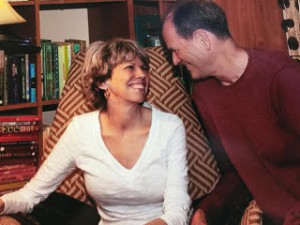There is a substantial segment of the population working unseen and without pay in the U.S. They are tireless, unsung heroes helping those who may not be able to care for themselves. They are family caregivers.
A few surveys have been conducted in recent years to finally document who these people are and what they do. The latest is The National Alliance for Caregiving (NAC) and the AARP Public Policy Institute (NAC/AARP) Survey. Summarized in Valuing the Invaluable 2015, it paints a picture of the 43.5 million unpaid caregivers to adults and children in the U.S.
Unpaid Caregiving: What’s In The Numbers?
According to The NAC/AARP Survey, 60 % of caregivers are female, 40% male. Their average age is 49, but 7% of them are over 75. On average they’ve been working for 4 years.
What Are Caregivers Doing?
Medical/Nursing Care
Two years ago, Susannah Fox, now HHS Chief Technology Officer, co-authored a June 20, 2013 publication at Pew Research. In it she wrote, “We are starting to see the effects of an aging population AND the financial pressures that many people are facing, especially in the “sandwich generation…Instead of outsourcing nursing care, people are stepping up to the task, like it or not, trained or not.”
The contributions to the welfare of loved ones take many forms. Many envision caregiving as buying groceries, housekeeping, bathing and dressing. This is valuable support. However, now family caregiving includes nursing and medical services like “wound care, managing medications, giving injections and tube feedings, monitoring blood sugar, preparing special diets, and operating medical equipment.”
Many family caregivers are doing these difficult medical tasks without preparation, support, guidance or help. In fact, 2 out of 3 caregivers stated there had been no visit from a supervising healthcare professional in the past year. Almost half of caregivers said that they were administrating between 5 and 9 medications a day, including intravenous fluids. Many worry they are going to make a mistake in this.
Fox found that almost 40% of Americans are caregivers and that they are navigating healthcare with help from the Internet. In fact, 20% of Medivizor’s subscribers are family caregivers.
Advocacy in Healthcare
As Rob Harris, author of We’re In This Together, A Caregivers Story, stated, “I attend all doctor’s appointments, quarterly check-ups…etc. “ He’s among the 50% who say that they advocate in the healthcare setting for loved ones. They make appointments and keep records; they ask questions. Yet many find that during hospitalizations, they are left out of the discussions and decision-making.
Time
It takes time to be a caregiver. Because of this, their financial status is often diminished. Sixty percent of caregivers state that they have modified their employment in some way to accommodate caregiving; examples include “cutting back on their working hours, taking a leave of absence,” even “receiving a warning about performance or attendance.” Some have become “self-employed” for the flexibility this arrangement affords.
 The stress caregivers are under impacts their health. Almost 20% characterize their health status as fair to poor.
The stress caregivers are under impacts their health. Almost 20% characterize their health status as fair to poor.
As their financial situation becomes more fragile, their contribution to the economic welfare of the nation increases. In 2007, AARP estimated their contribution to long term care as $375 billion. In the 2015 summary, the economic value of the unpaid services caregivers provide (based on 2013 information) is estimated to be $470 billion.
What do these figures really mean?
The report provides points of reference that can be used to understand this massive number. For example, this figure is almost four times the amount that Medicaid spent on long-term care services and support (LTSS) in 2013 ($123 billion). Although these are incredible contributions to the welfare of the recipient of caregiving, they are much more. They provide colossal support to the welfare of the nation and to maintaining the weft and warp of the social fabric.
Valuing the Invaluable Always
The document, Valuing the Invaluable 2015, is a depiction of caregiving in numbers. But to really understand family caregiving, it’s important to read a description by a caregiver. A recent post in, Ann Silberman, of “Breast Cancer…But Doctor I Hate Pink” is such an account.
Ann asked her husband to write his experience of caregiving.
He began his post with the lyrics of a song from their wedding:
When the years have done irreparable harm
I can see us walking arm in arm.
Just like that couple on the corner do
Girl, I will always be in love with you.
Then his narrative is a chronology of Ann’s health condition, Ann’s surgeries, Ann’s setbacks and hospitalizations. And in that simplicity, it’s a precise portrayal of what caregiving is: devotion to a loved one’s timeline, to the loved one’s life and health.
This is the heart of healthcare, but it is much more than that—it is love.
Caregivers need more than one month to honor them, their constancy, their steadfast fealty to those they care for. Though November is Family Caregiver Month, awareness of their work must be part of everyone’s life.
Remember, anyone around you–the policeman on the corner, the cashier at the store, your child’s teacher–could be a family caregiver. Be kind to those around you. We cannot know their story, but can be sure of the truth in this quote by Rosalyn Carter,
“There are four kinds of people in this world: those who have been caregivers, those who currently are caregivers, those who will be caregivers, and those who will need caregivers.”
Resources:
Here is a short list of online resources for caregivers.
http://www.caregiving.org/resources/
http://www.familycaregiversonline.net/
http://www.aarp.org/home-family/caregiving
http://www.caregiverslibrary.org






Thank you for this absolutely wonderful and informative article. Family caregiving is what it’s all about – when it’s your own blood, you just jump in and do it regardless of training or funds or anything. I’m so glad to see the numbers in this article highlight a massive trend of family caregiving and I’m glad to know that my family is not alone in this.
When we made http://screencompanion.com/ we weren’t just thinking about helping caregivers take a break and save money – we were also motivated very much by the emotions of spousal caregiving. The story of Ann’s husband in this article resonates with me personally because it reminds me of my dad caring for my mom (a cancer survivor and also my personal hero.)
Thanks for writing this!
You write about the dark side of family care giving – the family burden costs – but a bit more discussion might be helpful. The costs – emotional, physical, financial, and social – are well documented. Few outcome studies of chronic illness document these costs because of the complexities of measuring them. However, when family burden measures have been included they show that when illness outcomes improve the burden goes down and, importantly, these good results improve the bottom line both by decreased illness costs and making family members more productive. Evidence based treatment, especially when rehospitalization is an outcome measure, is cost effective – a good product at a good price. Throw in family burden costs and you get an even better product at an even better price.
Thank you for commenting. I’m not sure I understand your premise of “making family members more productive”? or the final line in your comment “better product at a better price.” I do know that caregivers need support that is not being provided at this time. That support includes respite, financial support and flexibility in their working conditions so that they can work. Many are stretched beyond their capacity.